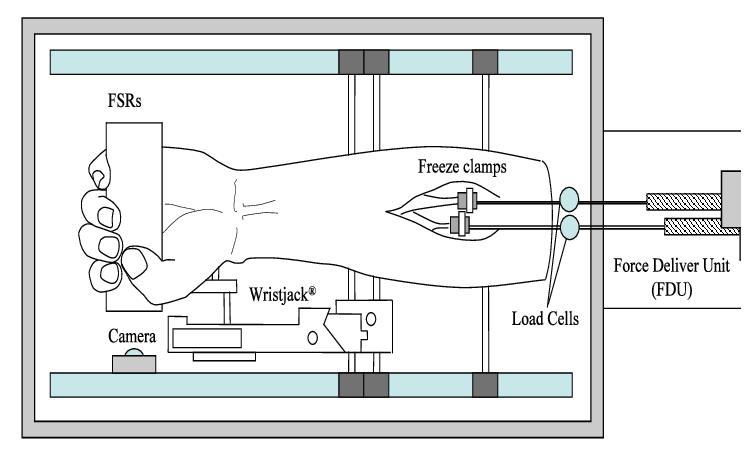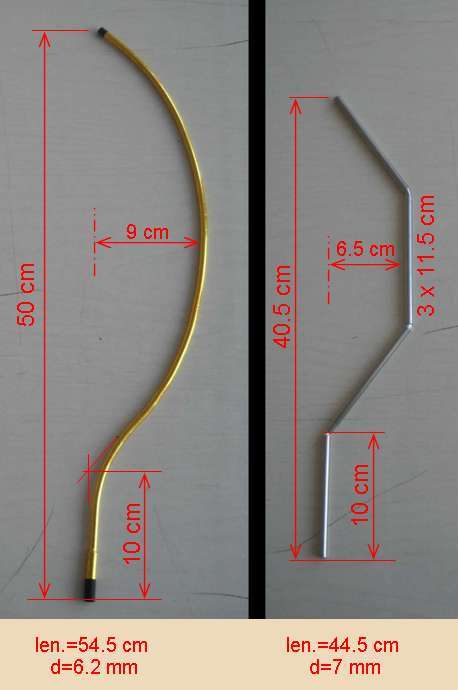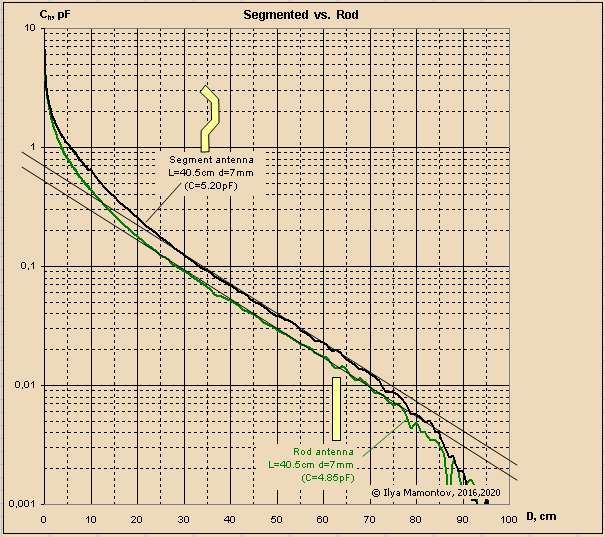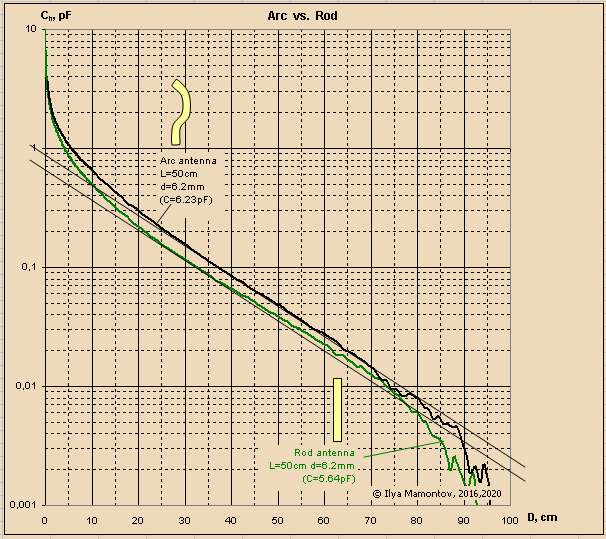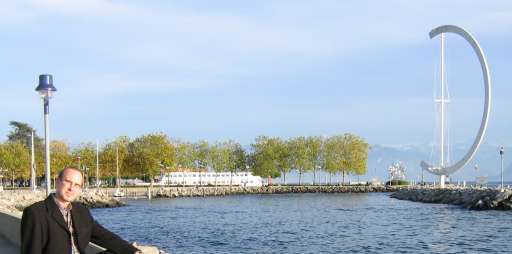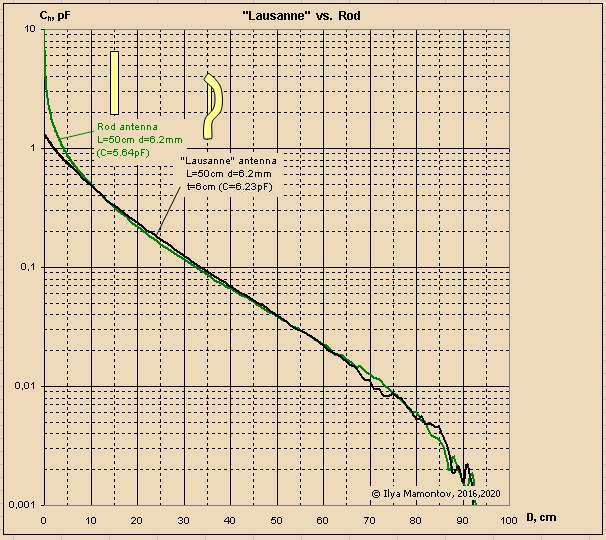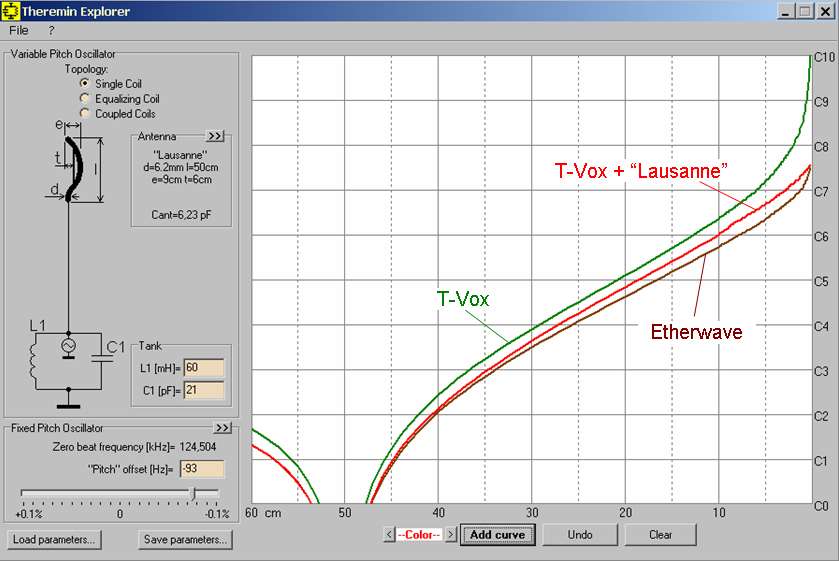"Natural hand" vs. different "hands" of 2016.
I'm not Michelangelo or even Tsereteli, but i did try to make a plausible model of hand (using styrofoam).
The fingers are approximately in 2nd aerial position and the outward surface is covered by self-adhesive aluminum foil (which has electrical contact with the rest of the "hand").
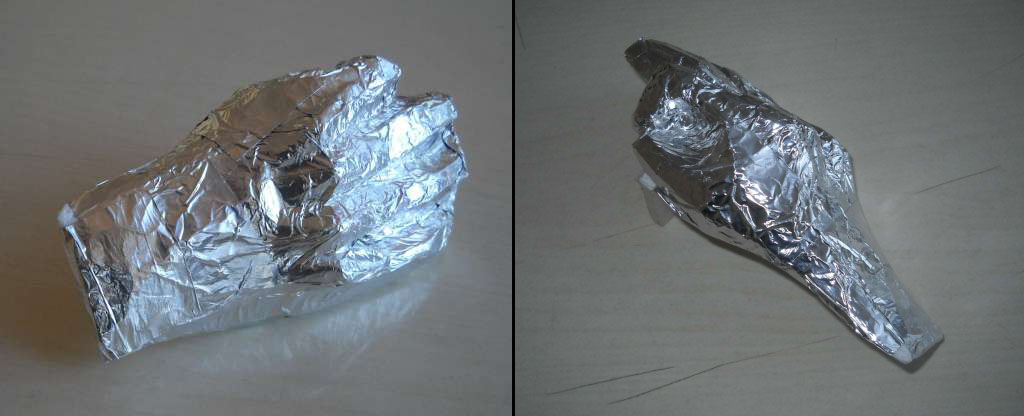
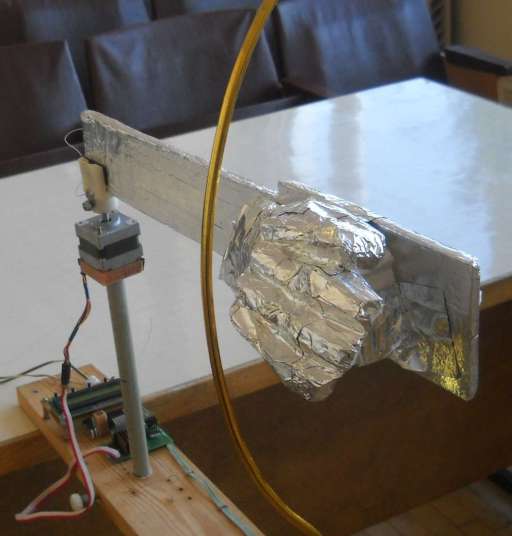
Unfortunately, the whole structure became heavier, which led to increased hand mechanical oscillations at step movement.
For some reason this was not reflected on measurement results (refer blue graph). Other graphs are correspond to hand shapes of 2016.
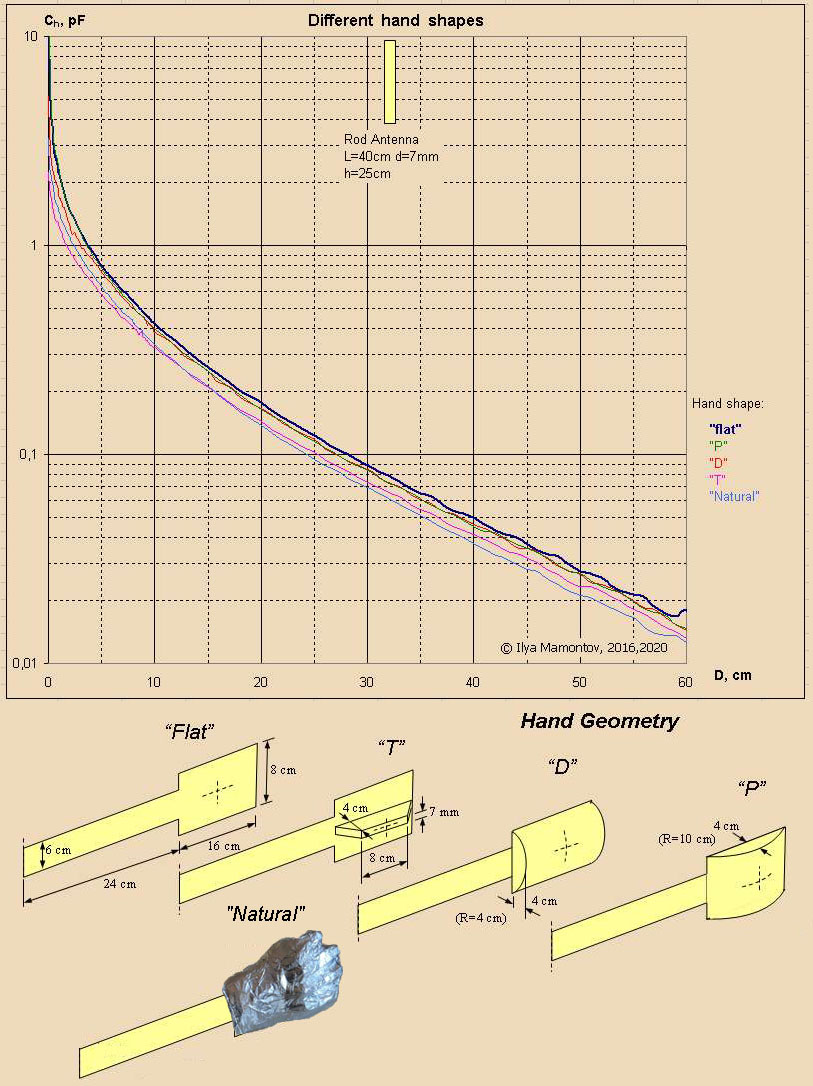
As you can see, the best match is given by model "T".
Possible by varying the height/thickness/angle of the perpendicular wall, you can achieve a better matching.


